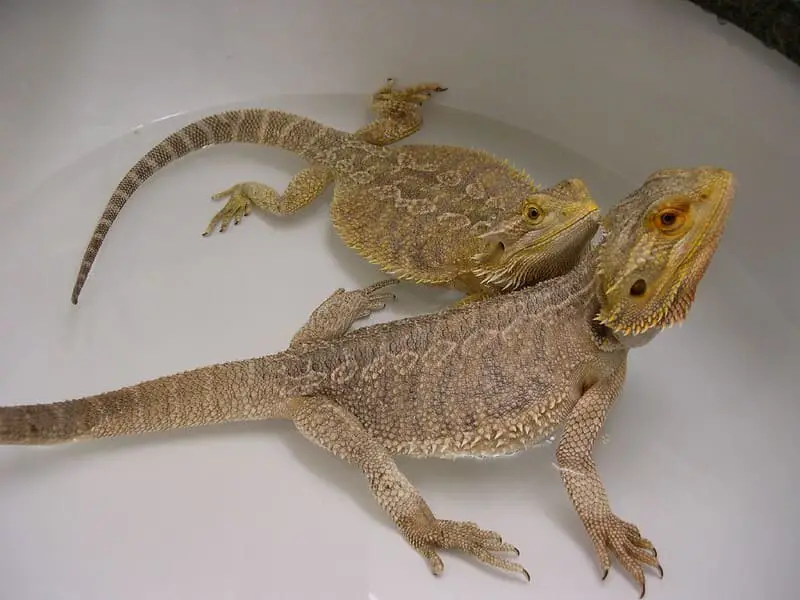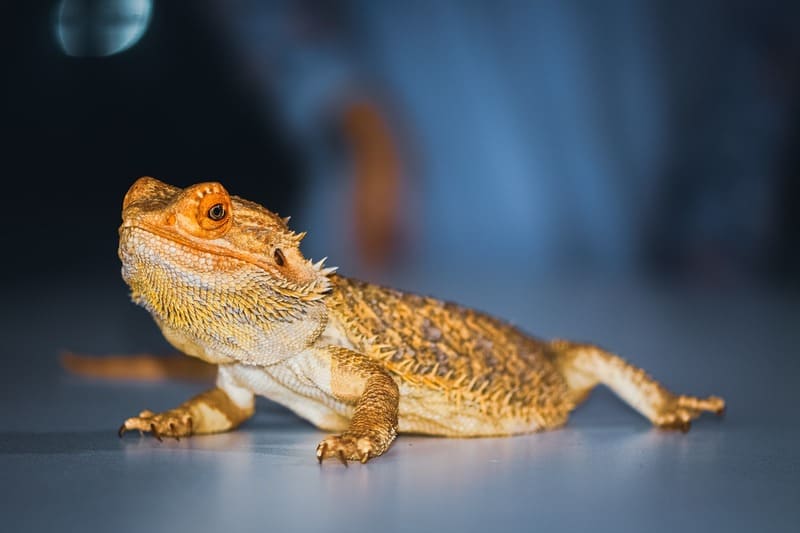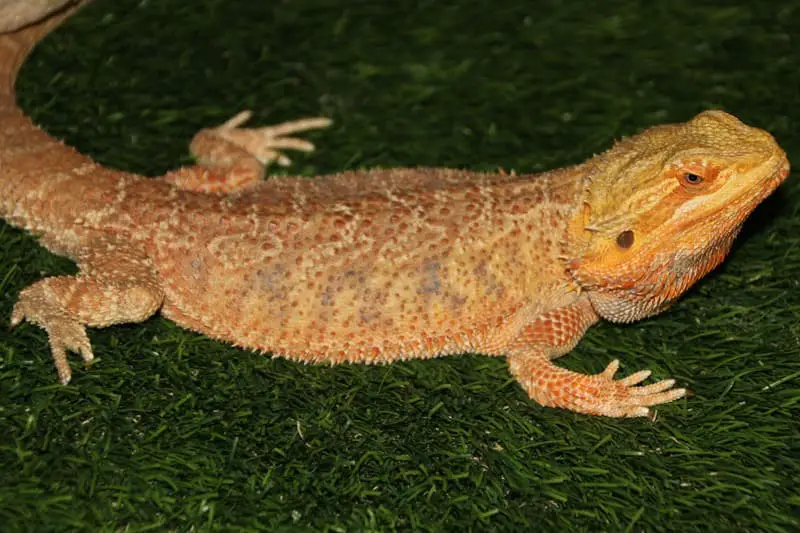Bearded dragons are known for their unique appearance, gentle disposition, and relatively straightforward care requirements. When it comes to meeting their hydration needs, the question of whether or not a water bowl is necessary often arises. In this comprehensive guide, we will explore the importance of water for bearded dragons, their natural water sources in the wild, and the role of water bowls in captivity. By the end of this discussion, you will have a better understanding of how to provide the best care for your beloved bearded dragon.

The Importance of Hydration for Bearded Dragons
Proper hydration is essential for the health and well-being of all animals, including bearded dragons. Water plays various crucial roles in their physiological functions, such as:
- Digestion: Adequate hydration is essential for the proper functioning of the digestive system. It helps bearded dragons break down food, absorb nutrients, and pass waste efficiently.
- Thermoregulation: Bearded dragons are ectothermic, meaning they rely on external sources of heat to maintain their body temperature. To control their temperature effectively, they require proper hydration to facilitate heat exchange through respiration and skin.
- Shedding: Bearded dragons periodically shed their skin. Sufficient hydration helps soften the old skin, making it easier for them to shed without complications.
- Metabolism: Water is involved in various metabolic processes, including the transport of nutrients and waste products throughout the body. Proper hydration supports metabolic functions.
- Respiration: Bearded dragons use respiration to regulate their body temperature. Respiratory efficiency depends on adequate hydration to exchange heat and maintain their body temperature.
- Detoxification: Water is essential for flushing waste and toxins from the body. It plays a vital role in the excretion of metabolic byproducts.
Bearded Dragons in the Wild: Natural Sources of Water
To understand the water requirements of bearded dragons, it’s informative to consider their natural habitat and how they meet their hydration needs in the wild. Bearded dragons are native to arid and semi-arid regions of Australia, where water sources may be limited. In the wild, they have adapted to obtain water from various sources, including:
1. Rainwater
Bearded dragons are opportunistic drinkers. They often drink rainwater when it is available. During rainfall, they may lick water droplets from leaves, rocks, or other surfaces.
2. Dew
Early morning dew and condensation on surfaces can be a source of hydration for bearded dragons. They may lick dew from plants, rocks, or the ground.
3. Moist Foods
In their natural habitat, bearded dragons may consume moisture-rich foods such as insects, plant matter, and even the occasional small vertebrate. These foods contribute to their overall water intake.
4. Water-Rich Plants
Bearded dragons also obtain water from the plant material they consume. Some plants in their habitat have a high water content, providing a source of hydration.
In the wild, bearded dragons have evolved to be efficient at conserving water and utilizing available resources for hydration. However, the conditions in captivity can be significantly different from their natural environment, which raises the question of whether a water bowl is necessary for pet bearded dragons.

Water Bowls in Captivity: Are They Necessary?
In captivity, providing a water bowl for your bearded dragon is a subject of debate among reptile enthusiasts and experts. The necessity of a water bowl for these reptiles depends on various factors, including the age of the bearded dragon, the environment, the individual’s preferences, and the overall care strategy.
Factors to Consider:
- Age: Young bearded dragons are more likely to drink from water bowls compared to adults. It is essential to provide water for hatchlings and juveniles as they may not be as efficient at obtaining water from food sources.
- Environmental Humidity: The humidity level in the enclosure is a critical factor. Bearded dragons require some level of humidity to maintain hydration. In excessively dry environments, providing a water bowl may be more important.
- Diet: The diet you provide plays a significant role in hydration. If your bearded dragon’s diet consists primarily of dry insects or lacks moisture-rich vegetables, they may benefit from a water source.
- Health: Some bearded dragons may have underlying health issues that affect their ability to obtain water from food. In such cases, providing a water bowl can be beneficial.
- Preference: Individual bearded dragons have varying preferences for how they drink water. Some may readily drink from a water bowl, while others may prefer droplets on plant leaves or other water sources.
Scenarios Where a Water Bowl May Be Beneficial:
- Hatchlings and Juveniles: Young bearded dragons may not be as skilled at obtaining water from food sources. Providing a water bowl can ensure they have easy access to hydration.
- Inadequate Diet: If your bearded dragon’s diet lacks moisture-rich foods, a water bowl can help compensate for the lack of water in their diet.
- Low Humidity Enclosures: If you are maintaining a drier environment to simulate their natural habitat, providing a water bowl can help prevent dehydration.
- Specific Health Issues: Bearded dragons with certain health problems, such as kidney issues, may require additional hydration. A water bowl can be beneficial in such cases.
Scenarios Where a Water Bowl May Not Be Necessary:
- Adult Bearded Dragons: Adult bearded dragons are often efficient at obtaining water from their diet. They may not need a water bowl if their diet includes moisture-rich vegetables and insects.
- High Humidity Enclosures: If you are maintaining a habitat with higher humidity levels, bearded dragons may be less reliant on a water bowl.
- Water from Food: If you are confident that your bearded dragon is obtaining sufficient water from their diet, they may not require a water bowl.
In summary, the necessity of a water bowl for your bearded dragon depends on the individual’s age, diet, health, and environmental conditions. Careful observation and consideration of these factors will help you determine whether or not to provide a water bowl in your pet’s enclosure.
Providing a Water Bowl
If you decide to offer a water bowl for your bearded dragon, it’s important to do so correctly to ensure their safety and well-being. Here are the steps to follow when providing a water bowl:
1. Choose the Right Bowl
Select a shallow, sturdy bowl that is easy for your bearded dragon to access. The bowl should be heavy enough to prevent tipping but not too deep to pose a drowning hazard. Consider using a ceramic or heavy plastic dish.
2. Keep It Clean
Maintain the cleanliness of the water bowl. Change the water daily, or as needed, to prevent contamination and the growth of harmful bacteria. Wash the bowl with hot water and mild soap during water changes.
3. Positioning
Place the water bowl in a location within the enclosure that is easily accessible to your bearded dragon. Be sure it is within their reach and not too close to their basking area to avoid overheating the water.
4. Monitor Water Levels
Monitor the water levels regularly to ensure there is an adequate supply of clean water. Bearded dragons may drink daily or drink intermittently, so having a consistent source of water is important.
5. Observe Their Preferences
Watch how your bearded dragon interacts with the water bowl. Some individuals may readily drink from it, while others may not show interest. Be prepared to provide alternative water sources if needed, such as water droplets on plant leaves or the occasional misting of the enclosure.

Alternatives to Water Bowls
In addition to water bowls, there are alternative methods to ensure your bearded dragon receives adequate hydration. These methods can be particularly useful if your pet does not show interest in a water bowl:
1. Hand Misting
You can mist the enclosure with a spray bottle to create water droplets on plant leaves and surfaces. Bearded dragons may drink the water droplets directly or lick moisture from the environment.
2. Offering Water on Plant Leaves
You can use an eyedropper or spray bottle to place water droplets on plant leaves within the enclosure. Bearded dragons often recognize and consume these droplets.
3. Providing Moist Food
Incorporate moisture-rich vegetables into your bearded dragon’s diet. Vegetables such as cucumbers, zucchini, and leafy greens can contribute to their overall water intake.
4. Soaking
Periodic soaking sessions in shallow, lukewarm water can help ensure your bearded dragon remains hydrated. Be sure to supervise the soak to prevent any accidents.
5. Wet Foods
Offering insects that have been gut-loaded with moisture-rich foods can also help provide additional hydration.
Conclusion
The question of whether or not a bearded dragon needs a water bowl does not have a one-size-fits-all answer. The necessity of a water bowl depends on various factors, including the age, diet, health, and environmental conditions of the individual bearded dragon. Careful observation and consideration of these factors will help you determine the best approach to meet their hydration needs.
Regardless of whether you provide a water bowl or use alternative hydration methods, it is essential to prioritize the health and well-being of your bearded dragon by ensuring they receive adequate hydration. Regular monitoring, clean water sources, and a balanced diet are key elements of responsible care for these beloved reptile pets.
